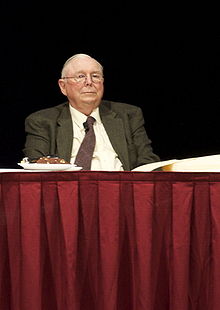A topic of significance for my nearly 18-year old son and me is the appropriate plan of action when dead people start shambling around biting people and turning them into more shambling dead people, aka zombies. Having been scared shitless in his childhood by the brilliant “28 Days Later” — which introduced the concept of sprinting zombies after years of the George Romero classic shamblers — he has had serious issues with zombie terror. This phobia even extended to certain levels of Halo where the Master Chief is called upon to kill an infectious horde of parasitic people snatchers called The Flood and was so bad in his case that he refused to play the Flood levels for several years.
Since, like bacon, zombies are the au courant American meme, my son is fixated on theoretical survival strategies. Now that he has figured out my Amazon account password, he decided it would be prudent to immediately order a Gerber “Bear Grylls Edition” Parang — think high-tech machete best suited for decapitation. This actually arrived. In a box. At my house. And now hangs on his wall. Any annoyance I may have had over this unauthorized purchase was diminished when the exact same parang appeared in the AMC series, The Walking Dead, a sighting that sent him over the top with smugness.
The parang purchase was followed by a pellet gun and a request to be allowed to take the firearms safety course so he could apply for a gun license (that request has not proceeded). The pellet gun has led to many hours of window replacement and glazing by yours truly, and has done nothing to dissuade the local herd of squirrels from digging up and snacking on next spring’s tulip bulbs.
Then dear Uncle Fester weighed in with his suggestion for the correct firearm for zombie control. A shotgun-in-a-can essentially.
I maintain that firearms, while effective in delivering a long-to-medium range headshot (I am told the only viable way to terminate a zombie is with a couple slugs “in the hat” as my mafia friends would say), lead to inevitable ammunition shortages and the ensuing need to occupy a gun store or WalMart during times of cemetery uprisings. Converging on gun stores will lead to competition with other would-be zombie hunters, bikers, homicidal maniacs, and other human detritus and would doubtlessly cause a shoot-out that would waste all the bullets in the store because of competition to loot all the bullets in the store.
 I believe an effective zombie solution has to be non-ballistic, delivered automatically, and depend on easily renewable supplies. Think catapults or trenches filled with diesel fuel. Anything manual, like swinging a parang at a zombie’s neck at close quarters is far too risky, especially if the sprinting, angry variety of zombies are involved. And then there is the dreaded splatter-in-your-mouth infection possibilities. No, the parang should be strapped, upside down, in the middle of one’s back, ready for that last stand when your back is against the wall and the gun is going click-click-click.
I believe an effective zombie solution has to be non-ballistic, delivered automatically, and depend on easily renewable supplies. Think catapults or trenches filled with diesel fuel. Anything manual, like swinging a parang at a zombie’s neck at close quarters is far too risky, especially if the sprinting, angry variety of zombies are involved. And then there is the dreaded splatter-in-your-mouth infection possibilities. No, the parang should be strapped, upside down, in the middle of one’s back, ready for that last stand when your back is against the wall and the gun is going click-click-click.
As we drove to college campuses or rowing regattas, our last fall together, what did my son and I talk about? Zombie strategies of course. Where we would go (desert island, boat, gun store, Home Depot, army base), what we would bring (the arsenal), and how it would probably go down. A good guidebook is World War Z: An Oral History of the Zombie War which both of us read with keen interest, especially the revelation that aquatic zombies walking on the ocean floor make island refuges untenable.
My solution, which he ridicules, is to hijack a truck, drive immediately to the local Women’s Workout World, load up all the treadmills, stop off at the hardware store and get lots and lots of extension cords, and then arrange the treadmills around the house, facing outwards, without their railings of course, and switch them on when it all hits the fan. Any zombie shambling up to Chez Churbuck would step onto the rapidly spinning treadmill belt and be propelled backwards at high speed.
He maintains I’d be out of luck once the lights went out — which would probably happen immediately as panicked motorists ran their Prii into utility poles — to which I say I would raid my neighbor Conrad’s barn (he runs Cotuit Solar) and cover the roof with China’s finest solar photovoltaic cells. What about nighttime, when zombies usually attack? he asks. Batteries, I reply. Lots of them.











